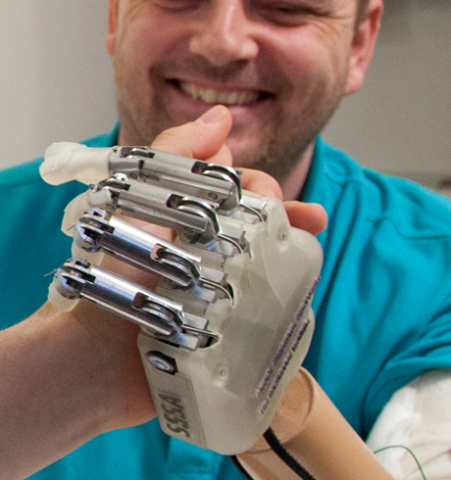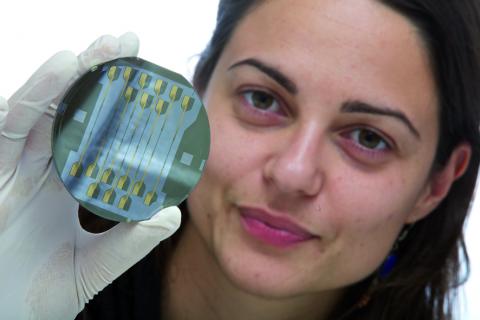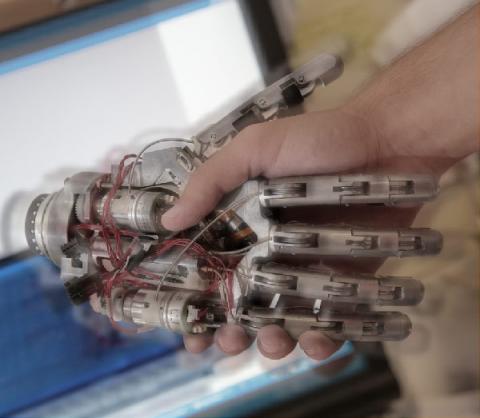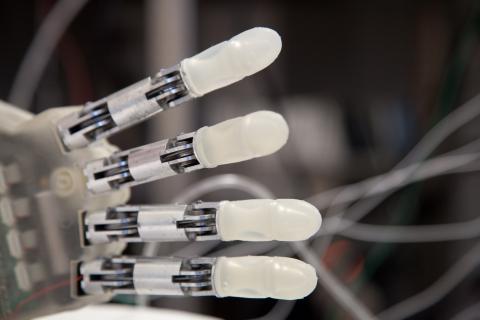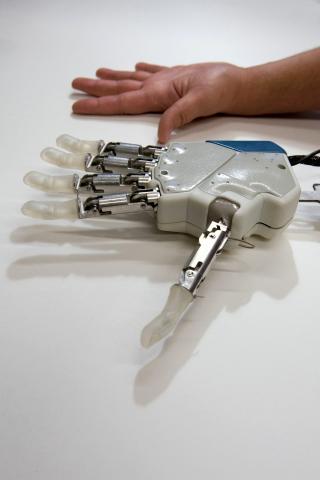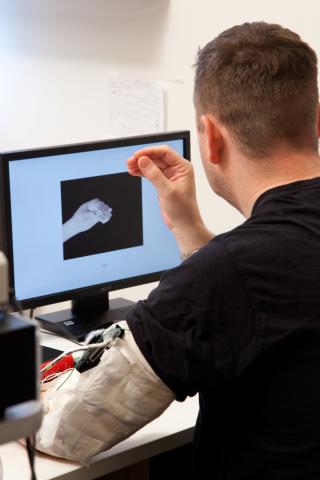Bioelectronics and Bioengineering Area
The goals of the research area are to increase basic knowledge about the functioning of the nervous system and to develop systems capable of restoring function in people with various types of neural impairment
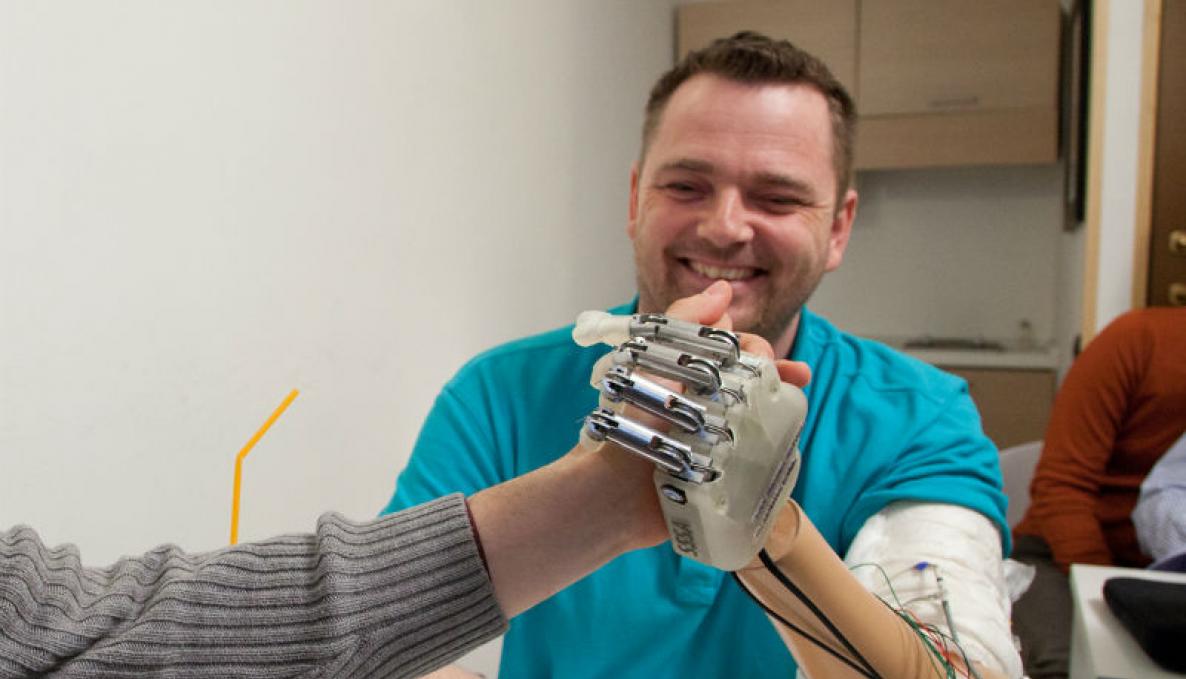
Neuroengineering is a novel discipline combining engineering including micro and nanotechnology, electrical and mechanical, and computer science with cellular, molecular, cognitive neuroscience with two main goals: (i) increase our basic knowledge of how the nervous system works; (ii) develop systems able to restore functions in people affected by different types of neural disability. In the past years, several breakthroughs have been reached by neuroengineers in particular on the development of neurotechnologies able to restore sensorimotor functions in disabled people.
In this framework the goal of the Area is to develop personalized neuroprostheses to improve the quality of life of disabled people by exploiting the potentials of neuroscience-driven approaches. In particular, we are working on the development of novel implantable neural interfaces, neuroprosthetic technologies to restore locomotion and grasping sensory-motor functions, bionic artificial limbs, advanced computational algorithms, novel approaches to understand motor control.
The TNE lab is also actively involved in three joint laboratories on “neural control of movements” (with the University of Pisa and the University Hospital of Pisa, Prof. Bruno Rossi and Dr. Carmelo Chisari) and on “translational neurorehabilitation” (with the Institute of Neuroscience of the Italian National Research Council, CNR, Dr. Matteo Caleo). The TNE Lab also collaborates with the “Movement assistance and rehabilitation laboratory" (MARE Lab), led by Dr. Nicola Vitiello.
Principal Investigator
Prof. Silvestro Micera
e-mail: silvestro.micera@santannapisa.it
Phone: 050-883481
Active grants
- NEBIAS “NEurocontrolled BIdirectional Artificial upper limb and hand prosthesis” - European Project, FP7-ICT-2013.9.6-FET Proactive: Evolving Living Technologies (EVLIT) #611687
- M2Neural “Multifunctional Materials for advanced Neural Interfaces” - European project, FP7-M-ERA.NET
- Human Brain Project - European project, HBP - SGA1
- RONDA (RObotica indossabile personalizzata per la riabilitazioNe motoria Dell’arto superiore i pAzienti neurologici) - Regional project.
- Brain network mechanism for integration of natural tactile input patterns - Scientific and Technological cooperation between Italy and Sweden.
- Bioelectronic medicines - GSK Medicines Research Centre
Recent publications
- Oddo CM, Raspopovic S, Artoni F, Mazzoni A, Spigler G, Petrini F, Giambattistelli F, Vecchio F, Miraglia F, Zollo L, Di Pino G, Camboni D, Carrozza MC, Guglielmelli E, Rossini PM, Faraguna U, Micera S. Intraneural stimulation elicits discrimination of textural features by artificial fingertip in intact and amputee humans. Elife. 2016 Mar 8;5:e09148. doi: 10.7554/eLife.09148.
- Moraud EM, Capogrosso M, Formento E, Wenger N, DiGiovanna J, Courtine G, Micera S. Mechanisms Underlying the Neuromodulation of Spinal Circuits for Correcting Gait and Balance Deficits after Spinal Cord Injury. Neuron. 2016 Feb 17;89(4):814-28. doi: 10.1016/j.neuron.2016.01.009.
- Cutrone A, Del Valle J, Santos D, Badia J, Filippeschi C, Micera S, Navarro X, Bossi S. A three-dimensional self-opening intraneural peripheral interface (SELINE). J Neural Eng. 2015 Feb;12(1):016016. doi: 10.1088/1741-2560/12/1/016016.
- Coscia M, Monaco V, Martelloni C, Rossi B, Chisari C, Micera S. Muscle synergies and spinal maps are sensitive to the asymmetry induced by a unilateral stroke. J Neuroeng Rehabil. 2015 Apr 18;12:39. doi: 10.1186/s12984-015-0031-7.
- Tropea P, Vitiello N, Martelli D, Aprigliano F, Micera S, Monaco V. Detecting slipping-like perturbations by using adaptive oscillators. Ann Biomed Eng. 2015 Feb;43(2):416-26. doi: 10.1007/s10439-014-1175-5. Epub 2014 Nov 7.
- Raspopovic S, Capogrosso M, Petrini FM, Bonizzato M, Rigosa J, Di Pino G, Carpaneto J, Controzzi M, Boretius T, Fernandez E, Granata G, Oddo CM, Citi L, Ciancio AL, Cipriani C, Carrozza MC, Jensen W, Guglielmelli E, Stieglitz T, Rossini PM, Micera S. Restoring natural sensory feedback in real-time bidirectional hand prostheses. Sci Transl Med. 2014 Feb 5;6(222):222ra19. doi: 10.1126/scitranslmed.3006820.
- Capogrosso M, Wenger N, Raspopovic S, Musienko P, Beauparlant J, Bassi Luciani L, Courtine G, Micera S. A computational model for epidural electrical stimulation of spinal sensorimotor circuits. J Neurosci. 2013 Dec 4;33(49):19326-40. doi: 10.1523/JNEUROSCI.1688-13.2013.
- Tropea P, Monaco V, Coscia M, Posteraro F, Micera S. Effects of early and intensive neuro-rehabilitative treatment on muscle synergies in acute post-stroke patients: a pilot study. J Neuroeng Rehabil. 2013 Oct 5;10:103. doi: 10.1186/1743-0003-10-103.
- Van den Brand R, Heutschi J, Barraud Q, DiGiovanna J, Bartholdi K, Huerlimann M, Friedli L, Vollenweider I, Moraud EM, Duis S, Dominici N, Micera S, Musienko P, Courtine G. Restoring voluntary control of locomotion after paralyzing spinal cord injury. Science. 2012 Jun 1;336(6085):1182-5. doi: 10.1126/science.1217416.
- Rossini PM, Micera S, Benvenuto A, Carpaneto J, Cavallo G, Citi L, Cipriani C, Denaro L, Denaro V, Di Pino G, Ferreri F, Guglielmelli E, Hoffmann KP, Raspopovic S, Rigosa J, Rossini L, Tombini M, Dario P Double nerve intraneural interface implant on a human amputee for robotic hand control. Clin Neurophysiol. 2010 May;121(5):777-83. doi: 10.1016/j.clinph.2010.01.001.

